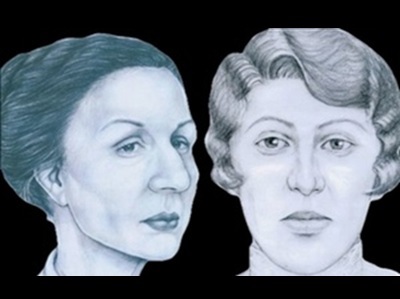Genealogy Links ‘Woman in the Well’ to Over a Century Ago
October 2, 2025 | by magnews24.com

Identification of Unidentified Woman from 1910s: A Breakthrough in Forensic Genealogy
In June 2006, skeletal remains were discovered by work crews excavating an old gas station site in Sutherland, a neighborhood of Saskatoon, Saskatchewan. The remains were wrapped in a burlap sack and placed within a wooden barrel, which had been disposed of in a local well. The investigation commenced when the Saskatoon Police Service responded to this unsettling find, leading to an examination of the contents and context in which the remains were located.
A clothing and textile historian aided law enforcement by dating the woman’s attire—which included a fitted jacket, high-collared blouse, and long skirt—to a period between 1910 and 1920. Additionally, items such as a broken golden necklace and a man’s vest and trousers were found alongside the remains, suggesting that the deceased was an adult woman who met a tragic fate in the early 20th century. The remains were located on what was once the site of the Shore Hotel, a boarding house of mixed reputation that operated during the era and was demolished in 1927.
Investigators postulated that the woman may have been partially dismembered before being placed in the barrel, raising suspicions of foul play. The historical context of Sutherland, a bustling railroad town at the time, may provide insight into the social circumstances surrounding her death. Moreover, forensic analysis suggested she was White, approximately 25 to 35 years old, standing around 5’1″ tall, with light brown to reddish hair. The quality of her clothing, jewelry, and dental work indicated a middle-class background.
Despite exhaustive investigative efforts—including the development of an STR DNA profile and two facial reconstructions—no matches were made for the unidentified woman. Over the years, police received numerous tips from individuals across Canada, and as far away as France, but none led to a definitive identification.
A breakthrough came in 2023 when the Saskatoon Police Service sent forensic evidence to Othram, a genetic genealogy company based in The Woodlands, Texas. Advanced DNA testing successfully yielded a complete DNA profile from the century-old remains. Utilizing Forensic-Grade Genome Sequencing, Othram’s team conducted a genetic genealogy search, enabling police to identify potential relatives.
Subsequently, forensic genealogists with the Toronto Police Service conducted follow-up investigations, ultimately leading to the positive identification of Alice Spence, born Alice Burke in September 1881. Alice had relocated with her family from St. Louis, Minnesota, to Sutherland in 1913. The last records of her existence date back to the 1916 Census, raising substantial questions about her disappearance and the circumstances surrounding her death.
Investigators suspect foul play occurred between 1916 and 1918, when a fire destroyed the family’s home. The case has revealed previously unknown details to Alice’s descendants, most of whom were unaware of her tragic end.
Alice Spence’s identification highlights the potential of forensic evidence and modern investigative techniques in resolving long-cold cases. As more tools become available to law enforcement, the hope of providing closure to families affected by historical mysteries grows. For individuals interested in aiding similar investigations, contributing DNA data to databases such as DNASolves could prove invaluable in continuing the quest for truth in unidentified cases.
This case marks the third instance in Saskatchewan where authorities have utilized Othram’s technology to identify individuals posthumously, reflecting the significant advancements being made in forensic science and genealogical research. Such innovations continue to bridge the gaps in history, shedding light on lives once lost to time.
RELATED POSTS
View all



